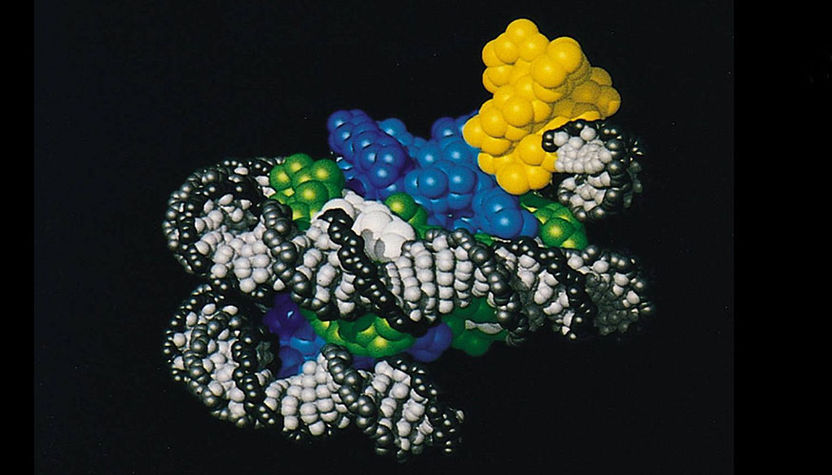New application of physics tools used in biology
A Lawrence Livermore National Laboratory physicist and his colleagues have found a new application for the tools and mathematics typically used in physics to help solve problems in biology.

High Resolution Image This DNA molecule is wrapped twice around a histone octamer, the major structural protein of chromosomes. New studies show they play a role in preserving biological memory when cells divide.
Memorial University of Newfoundland
Specifically, the team used statistical mechanics and mathematical modeling to shed light on something known as epigenetic memory -- how an organism can create a biological memory of some variable condition, such as quality of nutrition or temperature.
"The work highlights the interdisciplinary nature of modern molecular biology, in particular, how the tools and models from mathematics and physics can help clarify problems in biology," said Ken Kim, a LLNL physicist and one of the authors of a paper appearing in Physical Review Letters.
Not all characteristics of living organisms can be explained by their genes alone. Epigenetic processes react with great sensitivity to genes' immediate biochemical surroundings -- and further, they pass those reactions on to the next generation.
The team's work on the dynamics of histone protein modification is central to epigenetics. Like genetic changes, epigenetic changes are preserved when a cell divides. Histone proteins were once thought to be static, structural components in chromosomes, but recent studies have shown that histones play an important dynamical role in the machinery responsible for epigenetic regulation.
When histones undergo chemical alterations (histone modification) as a result of some external stimulus, they trigger short-term biological memory of that stimulus within a cell, which can be passed down to its daughter cells. This memory also can be reversed after a few cell division cycles.
Epigenetic modifications are essential in the development and function of cells, but also play a key role in cancer, according to Jianhua Xing, a former LLNL postdoc and current professor at Virginia Tech. "For example, changes in the epigenome can lead to the activation or deactivation of signaling pathways that can lead to tumor formation," Xing added.
The molecular mechanism underlying epigenetic memory involves complex interactions between histones, DNA and enzymes, which produce modification patterns that are recognized by the cell. To gain insight into such complex systems, the team constructed a mathematical model that captures the essential features of the histone-induced epigenetic memory. The model highlights the "engineering" challenge a cell must constantly face during molecular recognition. It is analogous to restoring a picture with missing parts. The molecular properties of a species have been evolutionarily selected to allow them to "reason" what the missing parts are based on incomplete information pattern inherited from the mother cell.
Most read news
Organizations
Other news from the department science

Get the chemical industry in your inbox
From now on, don't miss a thing: Our newsletter for the chemical industry, analytics, lab technology and process engineering brings you up to date every Tuesday and Thursday. The latest industry news, product highlights and innovations - compact and easy to understand in your inbox. Researched by us so you don't have to.







![[Fe]-hydrogenase catalysis visualized using para-hydrogen-enhanced nuclear magnetic resonance spectroscopy](https://img.chemie.de/Portal/News/675fd46b9b54f_sBuG8s4sS.png?tr=w-712,h-534,cm-extract,x-0,y-16:n-xl)















































